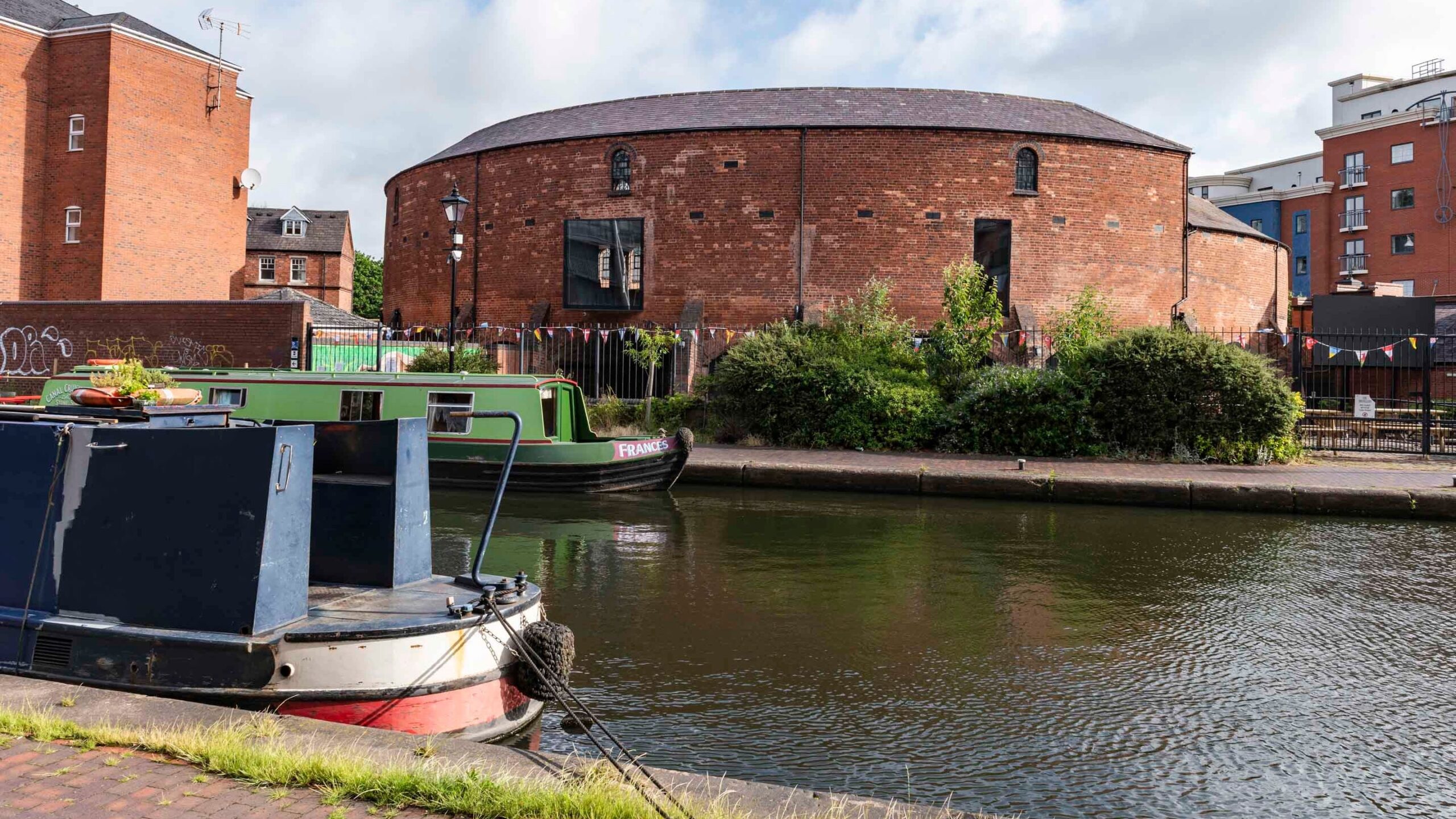The best free self-guided walking tours
Birmingham 1
Birmingham Canal Old Line – The City’s Industrial Artery
Standing beside the dark waters of the Birmingham Canal Old Line, you’re looking at what was once the busiest urban waterway in the world. This wasn’t just a canal – it was Birmingham’s industrial superhighway, the artery that helped the city become the “Workshop of the World.”
The towpath you’re standing on tells its own stories. Notice how the stone edges are deeply grooved – these marks were cut by countless rope cables as horses pulled laden barges around the bends. Look closely and you’ll see iron rings set into the stonework, where boats would tie up to load or unload their cargo. The width of the canal seems surprisingly narrow to modern eyes, but this was deliberate engineering: the narrow channel meant less water was needed and boats couldn’t pass each other, enforcing a strict one-way system that kept goods flowing efficiently.
Look for the different coloured bricks in the canal walls. The original 18th-century handmade bricks are a warm orange, while later Victorian repairs used harder, darker engineering bricks. The waterline is marked by a distinctive green-black stain – evidence of dense industrial boat traffic that once plied these waters. Below the waterline, the bricks are permanently stained with minerals from the coal and iron ore that spilled during transport.
Notice the occasional wider sections – these are passing places where boats could wait their turn, much like a modern passing lane on a highway. Each one was strategically placed and heavily used; look for the extra wear on the towpath and mooring points around these sections. The iron bridge ahead is typical of the period – its distinctive curved bracing wasn’t decorative but carefully calculated to handle the weight of horse-drawn traffic above while allowing maximum clearance for laden boats below.
The canal’s course wasn’t just about efficient transport – it reflected Birmingham’s confidence in reshaping the landscape to serve industry. This section was built as part of James Brindley’s original 1772 main line – imagine it crowded with boats carrying everything from Welsh coal to local brass fittings, all moving at a stately 4 miles per hour but transforming Birmingham into an industrial powerhouse. At its peak, this canal would have been clogged with boats 24 hours a day, their cargo ranging from raw materials feeding the city’s factories to finished goods heading to markets worldwide.
As we continue toward Gas Street Basin, we’ll see how this industrial artery opens into one of Birmingham’s busiest canal junctions…

